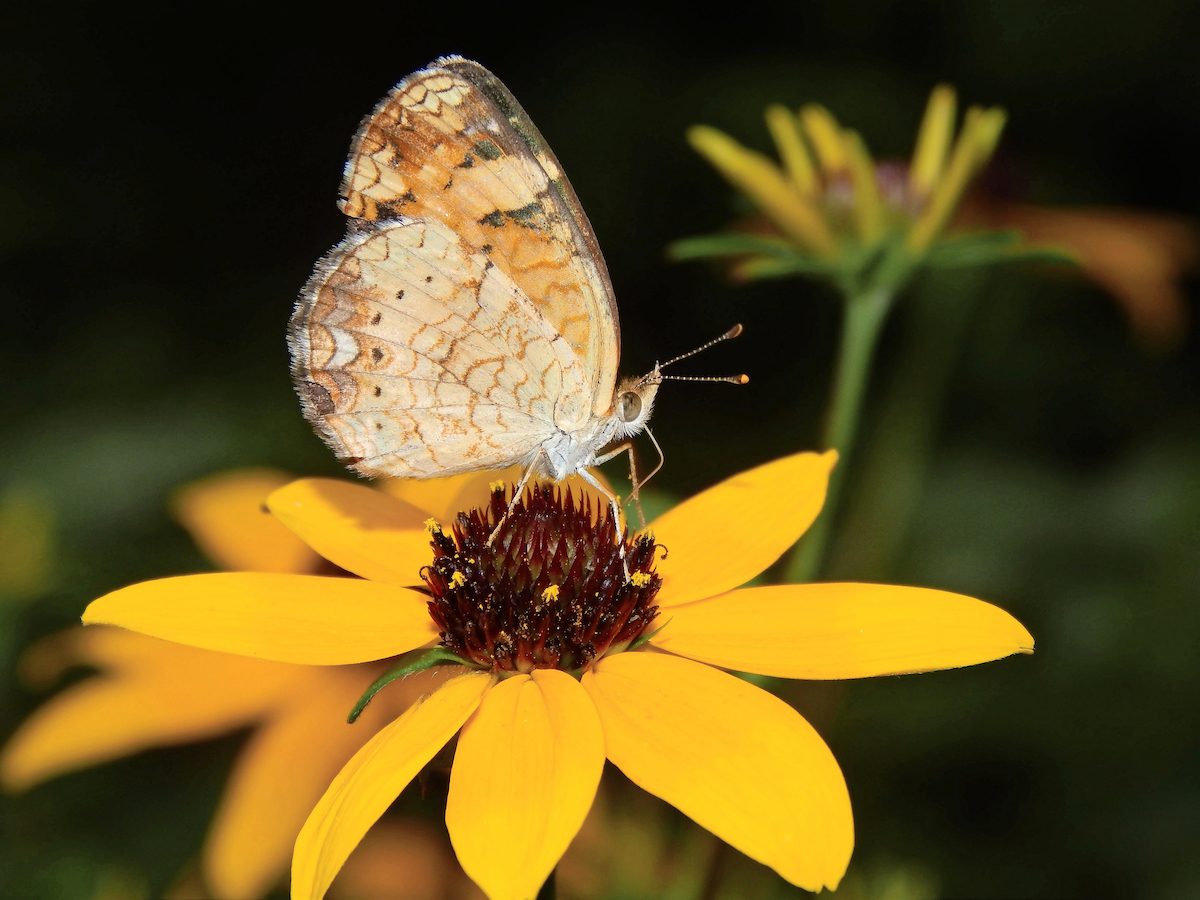See what a pearl crescent butterfly and caterpillar looks like, and learn which flowers will attract them to your garden.

How to Identify and Attract a Pearl Crescent Butterfly

A pearl crescent butterfly is a delightful visitor to your yard or garden. Here are answers to the most common questions asked about these beautiful pollinators.
On This Page
What Does a Pearl Crescent Butterfly Look Like?

The upperside of each wing is orange with large black patches and stripes. A small, pale crescent moon-shaped marking is on the underside of each wing. Their wingspan measures only about 1 1/4 inches wide.
Discover more small butterflies you should never overlook.
Range and Habitat
Look for pearl crescents in most of the U.S. east of the Rockies and parts of southern Canada. They’re commonly spotted in gardens, fields, roadsides and near woodlands.
Meet the tiny fiery skipper butterfly.
What Does a Pearl Crescent Caterpillar Look Like?
Pearl crescent caterpillars are brown with a cream stripe down the side and have many small spikes.
What does a monarch caterpillar and chrysalis look like?
Attract Pearl Crescent Butterflies With Asters

Asters are their favorite nectar source and your best bet for attracting adult pearl crescents. But you can attract these butterflies with almost any nectar producing flowers.
Best Host Plants to Grow
Adults lay minuscule white-green eggs in clusters on a variety of asters, which are their host plants. Try growing North American native heath aster (Aster ericoides), which flowers in late summer and early fall, making it a great source of nectar for late-season pollinators. Other good choices are frost aster (Symphyotrichum pilosum var. pilosum) and Drummond’s aster (Symphyotrichum drummondii var. texanum).
Next, learn how to identify a Baltimore checkerspot butterfly.























